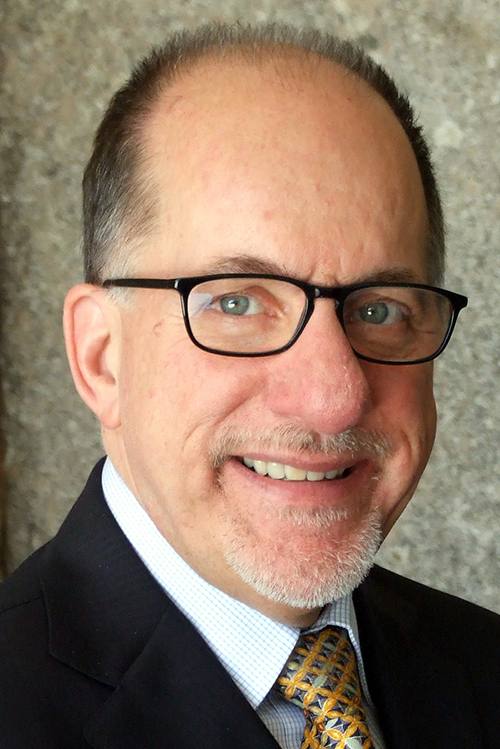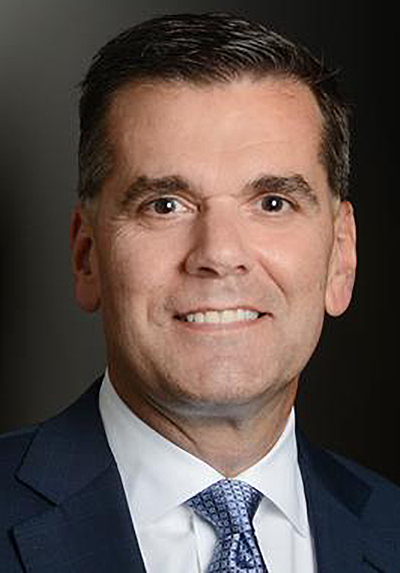Dec 14, 2018 | Laboratory Hiring & Human Resources, Laboratory Management and Operations, Laboratory Pathology, Laboratory Testing, Management & Operations
Though they mostly receive medical laboratory services from their parent health networks, microhospitals may, nevertheless, need services from independent clinical laboratories as well
For years, independent clinical laboratories and anatomic pathology groups have been adapting to healthcare networks undergoing changes based on increased demand for convenient, affordable medical services. One such innovation is the growing trend and popularity of microhospitals, which Dark Daily has reported on in multiple e-briefings.
These scaled-down healthcare facilities offer most critical medical services in smaller settings. They fill gaps between traditional hospitals and urgent-care facilities, are intended to be easier for patients to get to, and usually cost less than a typical community hospital of several hundred beds.
Although these microhospitals are typically owned by existing health networks and receive lab services from their parent health networks, for independent clinical laboratories, microhospitals could represent another potential customer in need of rapid test TATs in support of the facility’s emergency department and limited inpatient beds.
One-Stop Shops for Primary and Secondary Care
Microhospitals are typically between 20,000 and 60,000 square feet in size and offer a small number of inpatient short-stay beds—usually less than 15. They are licensed as hospitals and are usually low-trauma (levels 4/5) facilities that tend to focus on low-acuity patients.
Services at microhospitals vary from location to location, but generally include:
- emergency departments;
- imaging and diagnostic services;
- surgery and procedure centers;
- inpatient nursing facilities; and,
- medical offices.
They are open 24-hours/day, seven days/week, and commonly located in small, underserved areas where there is not sufficient demand for healthcare to support a full-size hospital.
Microhospitals operate as comprehensive, one-stop shops, with both primary and secondary care available. Many microhospitals also have certified and accredited medical laboratories onsite that can provide immediate testing results.
Population Health and Precision Medicine Benefit from Microhospitals
Microhospitals have been in existence for more than 10 years and are growing in popularity among consumers as well as providers. Rising healthcare demands, lower costs, convenient locations, and more personalized care make them popular for patients.
From a business perspective, microhospitals have much lower construction and overhead costs when compared to large hospitals, making them an affordable market-growth opportunity for providers. The savings are passed on to the patients as services are offered at a lower rate than conventional hospitals.
Another advantage of microhospitals is that the services offered can be designed specifically for the demographics of their neighborhood. A guiding goal of both population health and precision medicine initiatives.
“That’s the beauty of it,” Robert Garcia, Vice President of Healthcare Advisory Services at Transwestern, told U.S. News and World Report (U.S. News). “You can tailor the hospital to the needs of the community, so if it’s an older community it may be more catheterization lab, and if it’s a younger community it may have more orthopedic procedures.”
Nineteen states now have at least one microhospital in operation with more in the works. They often offer more convenient, quicker access to healthcare than traditional full-size hospitals can deliver. Larger facilities tend to have longer wait times and typically cannot provide the same personalized care as microhospitals, due to a higher number of patients and many diverse problems.
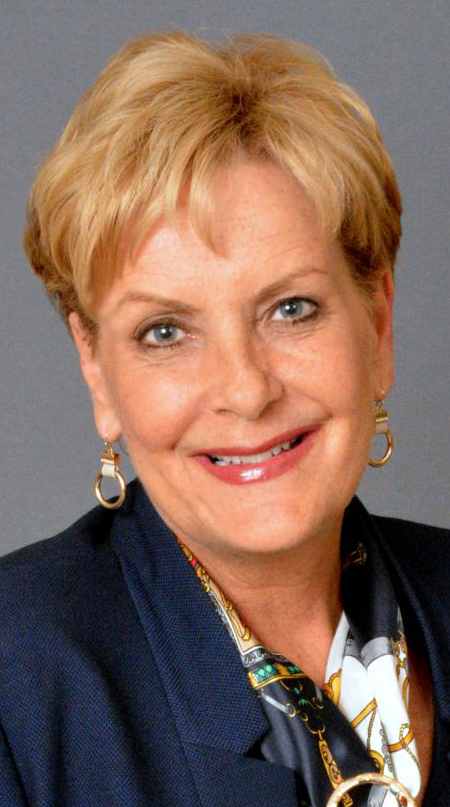
“Our neighborhood [microhospitals] will bring to communities an innovative, patient-centered model that provides the best possible experience and outcomes for those requiring emergency care, short hospital stays, and other outpatient services,” Cynthia Hundorfean, Allegheny Health President and CEO, told Becker’s Hospital Review. Pittsburgh-based Allegheny Health is scheduled to open four new microhospitals in 2019, all located in the metropolitan Pittsburgh area. These facilities will each offer 10 inpatient beds and emergency and diagnostic services. (Photo copyright: Allegheny Health.)
Phoenix-based Abrazo Community Health Network, plans to open a microhospital in Mesa, AZ, in the spring of 2019. This facility will include an emergency department, an operating room, eight inpatient rooms, and will focus on lower acuity inpatient procedures.
“Medical care continues to evolve with a consumer focus, and this is a new model for bringing healthcare services into the community,” Frank Molinaro, CEO of Abrazo’s Phoenix Market, told Commercial Executive Magazine. “The Mesa microhospital will offer a patient-friendly design with emergency and acute care services in an efficient, convenient location. It’s designed to provide close integration with our other facilities for patients who may require more complex care.”
Emerus, a microhospital developer, operates more than 20 microhospitals nationwide. According to their website, the company has 24 additional microhospitals under development.
“Emerus picks locations that have a need for additional emergency room beds,” Richard Bonnin, Senior Public Relations Consultant at Emerus, told U.S. News. “Increasing access to high-quality emergency care and focusing on the patient-physician relationship has provided a strong foundation for our growth.”
Not a Replacement for Traditional Hospitals
While microhospitals are equipped to handle a large range of healthcare issues, they are not able to deal with all medical situations. There are cases where patients may have to be referred to a larger facility.
“Not every [microhospital] is a Level 1 trauma center or cardiac center of excellence. It’s up to the smaller hospitals to diagnose, stabilize, and transfer patients as appropriate,” noted Bonnin in the U.S. News article. “They will send patients to the best trauma center, the best heart hospital, the best stroke center without a lengthy emergency room wait, depending on what the most immediate needs may be.”
Although most microhospitals are owned by existing health networks and most likely receive their medical laboratory services through their parent organization, independent clinical laboratories might find themselves being contacted when faster TATs or closer proximities are required to ensure positive healthcare outcomes.
—JP Schlingman
Related Information:
What You Need to Know about Microhospitals
5 Common Questions about Microhospitals, Answered
Microhospitals Market: Global Industry Analysis 2012-2016 and Opportunity Assessment
Microhospitals Provide Health Care Closer to Home
Microhospitals Are on the Rise
2018 Trends: Microhospitals to Gain Popularity
Allegheny Health Network to Open Four Microhospitals in 2019
Abrazo Entering East Valley with New Microhospital in Mesa
Telemedicine and Microhospitals Could Make Up for Reducing Numbers of Primary Care Physicians in US Urban and Metro Suburban Areas
‘Thinking Small’ May Be Next Big Innovation in Healthcare Delivery as Microhospitals Spring Up in Metropolitan Areas Across Multiple States
Oct 31, 2018 | Laboratory Hiring & Human Resources, Laboratory Management and Operations, Laboratory News, Laboratory Operations, Laboratory Pathology, Laboratory Testing
Only 3% of histopathology departments that responded to the Royal College of Pathologists’ workforce census reported enough staff to meet clinical demand
There is a chronic shortage of histopathologists in the United Kingdom (UK) and it is being blamed for cancer treatment waiting times that now reach the worst-ever levels, as National Health Service (NHS) training initiatives and other steps fail to keep pace with growing demand for diagnostic services.
For US anatomic pathologists and clinical laboratory managers, headlines from the UK reveal the impact a shortage of trained histopathologists (UK’s version of anatomic pathologists) and support technical staff can have on patient care when longer wait times for pathology support and diagnosis become the norm.
Royal College of Pathologists Report
The extent of the UK-wide histopathology staff shortages was highlighted in a recently released 2017 workforce census by the Royal College of Pathologists (RCPath). Of the 103 histopathology departments that responded to a survey, only 3% said they had enough staff to meet the current clinical demand! And 45% of departments had to outsource work, while half of the departments were forced to use more expensive temporary workers.
“The cost of staff shortages across histopathology departments is high for both patients and for our health services,” Jo Martin, PhD, President of the Royal College of Pathologists, noted in a statement announcing the survey results. “For patients, it means worrying delays in diagnosis and treatment. For NHS hospitals, it means spending more resources on [temporary] doctors to fill staffing gaps, or outsourcing services. We estimate this cost [to be] £27 million ($35.2 million) each year across the UK health service—money that could be better invested in staff and new diagnostic equipment.”

Royal College of Pathologists President Jo Martin, PhD, is calling on the National Health Service to take additional steps to increase the number of pathologists working in the United Kingdom, including more funded training places. That’s following the release of a Royal College of Pathologists workforce survey, which reported only 3% of histopathology departments in the UK have enough staff to meet clinical demand. (Photo copyright: Twitter.)
According to iNews, NHS England recorded its worst cancer treatment waiting times on record in July 2018, with more than 3,000 people waiting longer than two months for cancer treatment to begin. NHS’ target is for 85% of patients to begin cancer treatment within 62 days of being referred by their general practitioner.
Anatomic pathologists in the United States should consider how the UK’s average delay in starting cancer treatment affects patients in that country. It is a metric that patients in the US would not tolerate. However, in the UK’s single payer system, the government’s National Health Service sets the budgets for training new physicians, including histopathologists. For many years, the pathology profession in the UK has regularly advocated for increasing the number of histopathologists trained each year by the medical schools in that country.
In July, the number of patients waiting for treatment longer than 60 days fell to 78.2%, the 31st month in a row the target was breached, iNews reported.
“We know that histopathology consultant shortages contribute to at least part of that problem,” Martin told iNews.
The RCPath report highlights the intense pressures on histopathologists—most of whom working in understaffed laboratories—face from increased workloads, as new NHS cancer screening initiatives, an aging population, and a shift toward precision medicine result in a rising number of cases being referred to labs.
“Demand for pathology services has grown significantly in recent years and continues to grow,” Martin noted in the RCPath statement. “The pathology workforce has not increased in line with this demand. If this trend continues unchecked, clinical services could be in jeopardy. Making sure pathology services can cope with current and future demand is essential if we are to ensure early diagnosis and improve outcomes for patients.”
Lack/Loss of Trained Histopathologists an Ongoing Problem
This is not the first time the alarm has been sounded in the UK over the lack of investment in trained pathologists along with a growing shortage of trained professional staff. In 2017, Dark Daily reported on calls by pathologists and other physicians for the UK government to increase funding for trained medical laboratory professionals to avert a predicted critical shortage in laboratory staffing within the next decade. (See “Pathologists and Physicians in United Kingdom Comment on How Shortage of Medical Laboratory Professionals Could Soon Delay Essential Diagnostic, Therapeutic Testing,” February 6, 2017.)
In its most recent workforce report, The Royal College of Pathologists is reiterating its call for:
- Increased funding for training;
- Better information technology (IT) for day-to-day work;
- Capital investment to implement digital pathology more widely; and,
- Development of advanced clinical practitioner apprenticeships to help more biomedical scientists become independent practitioners who would work alongside medically-qualified histopathologists.
Long-term, the organization is calling for additional training slots for pathologists in universities as well as other changes to draw more scientists into the field.
Aging Pathology Staff Means Shortages in US a Possibility
The NHS has stopped short of declaring the pathologist shortage a crisis. Instead, a Department of Health and Social Care spokesperson in an interview with the BBC highlighted recent initiatives taken in response to the shortage. “There are hundreds more pathologists in the NHS compared to 2010 and hospitals have reduced spending on temporary agency staff by over half a billion pounds in the last year,” the spokesperson noted. “We are listening to staff, encouraging more flexible working, and have increased medical training places for home-grown doctors by 25%, to ensure the NHS has the workforce it needs for the future.”
Despite those steps, the NHS may have more work to do. According to the Royal College of Pathologists workplace survey, a quarter of all histopathologists in the UK are 55 or older, adding an approaching retirement crisis to the existing shortage.
US anatomic pathology groups and clinical laboratories should monitor these events with a keen eye. The American pathology industry is challenged by many of the same trends, such as an aging workforce and lackluster replacement initiatives. Time will tell if the US learns from the UK’s experience.
—Andrea Downing Peck
Related Information:
College Report Finds Severe Staff Shortages Across Services Vital to Cancer Diagnosis
Pathologist Shortage ‘Delaying Cancer Diagnosis’
Cancer Treatment Waiting Times Worsening Amid Shortage of Pathology Staff
Histopathology Staff Shortages ‘Affecting Cancer Diagnoses’
Cancer Waiting Times at Their Worst Ever Level
Meeting Pathology Demand
Pathology Staff Shortages Causing Delays to Cancer Diagnosis, Says Report
Pathologists and Physicians in United Kingdom Comment on How Shortage of Medical Laboratory Professionals Could Soon Delay Essential Diagnostic, Therapeutic Testing
Jun 29, 2018 | Laboratory Hiring & Human Resources, Laboratory Management and Operations, Laboratory News, Laboratory Operations, Laboratory Pathology
While consolidation is a common trend across many sectors—including anatomic pathology groups and hospital systems—UnitedHealth Group is the latest example of the payer-provider consolidation trend impacting medical laboratories nationwide
Pending the successful completion of a $4.9-billion acquisition of DaVita Medical Group, UnitedHealth Group (UNH) will be poised to become the largest single employer of doctors in the U.S., according to numbers reported by leading sources.
Clinical laboratories, anatomic pathology groups, and other service providers that service those doctors should already be taking a serious look at their revenue flows and efficiencies to maintain margins and weather the shift into a model of value-based reimbursement.
Controlling Costs with Direct Care
According to a press release, UnitedHealth Group’s (NYSE:UNH) direct-to-patient healthcare subsidiary, OptumCare, currently employs or is affiliated with 30,000 physicians. And, DaVita Medical Group, a subsidiary of DaVita Inc. (NYSA:DVA), lists 13,000 affiliated physicians on their website. Should acquisition of DaVita Medical Group go forward, OptumCare would have approximately 43,000 affiliated or employed physicians—roughly 5,000 more physicians than HCA Healthcare and nearly double Kaiser Permanente’s 22,080 physicians—thus, making OptumCare’s parent company UNH the largest individual employer of physicians in the U.S. The acquisition is reportedly to reinforce UNH’s ability to control costs and manage the care experience by acquiring office-based physicians to provide services.
OptumCare has seen significant growth over the past decade. OptumHealth, one of three segments of UNH’s overall Optum healthcare subsidiary, includes OptumCare medical groups and IPAs, MedExpress urgent care, Surgical Care Affiliates ambulatory surgery centers, HouseCalls home visits, behavioral health, care management, and Rally Health wellness and digital consumer engagement.
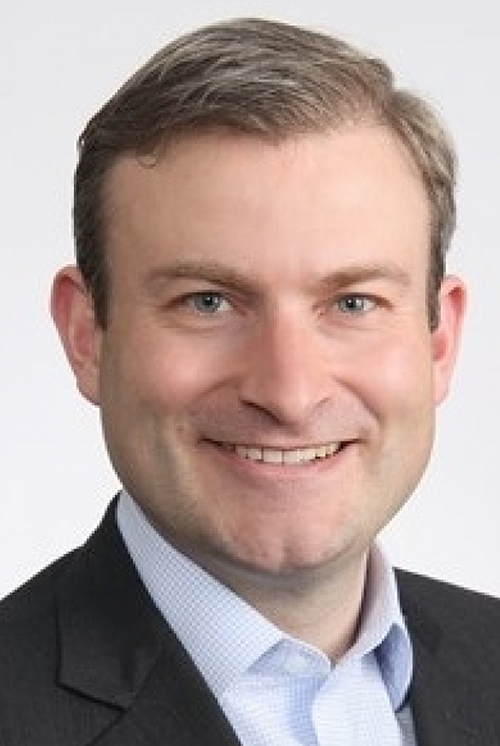
“We have been slowly, steadily, methodically aligning and partnering with phenomenal medical groups who choose to join us,” Andrew Hayek, CEO of OptumHealth (above), told Bloomberg. “The shift towards value-based care and enabling medical groups to make that transition to value-based care is an important trend.” (Photo copyright: Becker’s ASC Review.)
Acquisitions of Doctors on the Rise; Clinical Lab Revenues Threatened
Independent physicians and practices have been a hot commodity in recent years. A March 2018 study from Avalere Health in collaboration with the Physicians Advocacy Institute (PAI) showed that the number of physicians employed by hospitals rose from 26% in July 2012 to 42% in 2016—a rise of 16% over four years.
By acquiring physicians of their own, insurance companies like UnitedHealth Group believe they can offset the cost and shifts in service of these prior trends. “We’re in an arms race with hospital systems,” John Gorman of Gorman Health Group told Bloomberg. “The goal is to better control the means of production in their key markets.”
According to Modern Healthcare, the acquisition of DaVita Medical Group is UnitedHealth’s third such acquisition in 2017. Other acquisitions include:
Along with Surgical Care Affiliates came a chain of surgery centers that, according to The New York Times (NYT), OptumCare plans to use to perform approximately one million surgeries and other outpatient procedures this year alone, while reducing expenses for outpatient surgeries by more than 50%.
NYT also noted that acquisition of DaVita Medical Group doesn’t bring just physicians under the OptumCare umbrella, but also nearly 250 MedExpress urgent care locations across the country.
By having physicians, clinical laboratories, outpatient surgery centers, and urgent care centers within their own networks, insurance providers then can steer patients toward the lowest-cost options within their networks and away from more expensive hospitals. This could mean less demand on independent clinical laboratories and hospitals and, with that, reduced cash flows.
According to NYT, Optum currently works with more than 80 health plans. However, mergers such these—including those between CVS Health (NYSE:CVS) and Aetna (NYSE:AET), and the proposed agreement between Humana (NYSE:HUM) and Walmart (NYSE:WMT) to deliver healthcare in the retailers’ stores—indicate that insurers are seeking ways to offer care in locations consumers find most accessible, while also working to exert influence on who patients seek out, to generate cost advantages for the insurers.
This consolidation should concern hospitals as payers increasingly draw physicians from them, potentially also taking away their patients. The impact, however, may also reach independent medical laboratories, medical imaging centers, anatomic pathology groups, and other healthcare service providers that provide diagnoses and treatments in today’s complex healthcare system.
Deep Payer Pockets Mean Fewer Patients for Clinical Labs and Medical Groups
As this trend continues, it could gain momentum and potentially funnel more patients toward similar setups. Major corporations have deeper pockets to advertise their physicians, medical laboratories, and other service providers—or to raise public awareness and improve reputations. Such support might be harder to justify for independent healthcare providers and medical facilities with shrinking budgets and margins in the face of healthcare reform.
Shawn Purifoy, MD, a family medicine practitioner in Malvern, Ark., expressed his concern succinctly in The New York Times. “I can’t advertise on NBC [but] CVS can,” he noted.
While further consolidation within independent clinical laboratories and hospitals might help to fend off this latest trend, it remains essential that medical laboratories and other service providers continue to optimize efficiency and educate both physicians and payers on the value of their services—particularly those services offered at higher margins or common to menus across a range of service providers.
—Jon Stone
Related Information:
With 8k More Physicians than Kaiser, Optum Is ‘Scaring the Crap Out of Hospitals’
30,000 Strong and Counting, UnitedHealth Gathers a Doctor Army
CVS’s Megadeal to Change U.S. Health Care Faces Stiff Challenges
Updated Physician Practice Acquisition Study: National and Regional Changes in Physician Employment 2012–2016
The Disappearing Doctor: How Mega-Mergers Are Changing the Business of Medical Care
UnitedHealth’s Optum to Buy DaVita Medical Group for $4.9B: 6 Things to Know
UnitedHealth Buys Large Doctors Group as Lines Blur in Healthcare
UnitedHealth’s Optum to Buy DaVita Medical Group for $4.9 Billion
UnitedHealth Is Buying a Major Doctor Group on the Heels of the CVS-Aetna Deal
DaVita Medical Group to Join Optum
Jun 20, 2018 | Laboratory Hiring & Human Resources, Laboratory Management and Operations, Laboratory News, Laboratory Operations, Laboratory Pathology, Laboratory Testing
Medical laboratories prepared to receive direct payments for services rendered will have an advantage as more physicians’ practices convert to concierge medicine and stop taking insurance or Medicare
A growing number of physicians are looking at new care delivery models as increasing costs and narrow networks drive patients into high-deductible health plans (HDHPs). These can include concierge medicine and direct primary care. Clinical laboratories and anatomic pathology groups will need to adapt to these new models of healthcare.
Concierge medicine is basically an alternative medical practice model. Its main benefit is providers see far fewer patients and can provide higher-quality care to patients who can afford to pay the fees. Dark Daily reported on this growing trend as far back as 10 years ago (see, “More Doctors Consider Concierge Medicine as Healthcare Reform Looms,” June 8, 2009), and as recently as this year (see, Some Hospitals Launch Concierge Care Clinics to Raise Revenue, Generating both Controversy and Opportunity for Medical Laboratories, April 23, 2018.)
Now, a new payment program called Direct Primary Care (DPC), which is emerging as an alternative to traditional health insurance plans, could further help patients in HDHPs—and the uninsured—afford quality healthcare.
The main difference between DPC and concierge medicine lies in how doctors get compensated. Monthly membership fees are usually the only source of revenue for DPC practices and they do not accept any type of insurance. Concierge practices, on the other hand, bill insurance companies and Medicare for covered medical services and collect membership fees for services that are not covered.
In general, if a third-party payer is not involved, the practice is considered Direct Primary Care.
DPC versus Concierge Medicine: How Do They Compare?
Direct Primary Care is an offshoot of concierge medicine and the two terms are often used interchangeably. Although similar, there are distinct differences between the two models of care.
Concierge medicine was created in the mid 1990’s and was originally used by wealthy patients who were willing to pay a high subscription fee for access to select physicians. However, this model has changed over the years, making concierge medicine economically available to lower income individuals as well.
According to Concierge Medicine Today, the majority of concierge medicine plans cost between $51 and $225 per month in 2017. Eleven percent of concierge plans charge less than $50, and 35% cost more than $226 per month. There are some high-end concierge plans that can cost upwards of $30,000 per year.
Direct Primary Care was started in the mid 2000’s as an insurance-free plan mainly for the uninsured. In 2015, the Journal of the American Board of Family Medicine reported that the average monthly cost for patients on a DPC plan was $93.26 among the 116 practices they surveyed. The range in costs at that time was $26.67 to $562.50 per month. They also found that practices that identified themselves as “Direct Primary Care” charged a lower fee on average than concierge practices.
The patient base also varies between the two types of practices. According to Cypress Concierge Medicine in Nashville, Tenn., DPC physicians usually treat younger patients with an annual household income of less than $50,000, while concierge medicine doctors typically treat patients over the age of 45 who have an annual household income of $75,000 or more.
Physicians in both plans try to limit the number of patients they serve to a few hundred to ensure they can provide the best possible care to their clients.
Physicians Like Direct Primary Care Programs
DPC physicians charge a monthly membership fee for their services based on the patient’s age, the type of practice, and the number of individual family members on the DPC plan. The monthly fee includes routine office visits—usually with no co-pays—and almost constant access to a physician through telemedicine technology.
DPC plans also provide same or next-day appointments for members and offer lower costs for pharmaceuticals and lab tests.
Direct Primary Care programs are attractive to physicians who often feel overworked by too many patients, too much tedious paperwork, too much time dealing with insurance companies and too little time to provide quality care.
“There are thousands of physicians in career crisis who are investigating new ways to practice medicine and in essence, love going to work again,” noted Michael Tetreault, Editor-in-Chief of The DPC Journal.
Jeffrey Gold, MD, a Family Practice specialist in Marblehead, Mass., left his position with a successful physicians group to launch his own DPC practice.
“It’s really blue-collar concierge medicine,” Gold told the Boston Globe. He added that his former practice model “was all about volume and coding and how many people a day you can see.”
“I couldn’t do it anymore,” he admitted. “It was not aligned with how I grew up thinking about medicine.”
DPC/Concierge Practices Expected to Increase in Numbers
With a growing number of patients in high-deductible health plans, concierge medicine and DPC practices are expected to increase in number. According to Direct Primary Care Frontier, an online resource that supports DPC, in 2014 there were only 125 DPC practices in the US. However, by April of 2017, that number had jumped to 620, and as of March 2018, the estimated number of DPC practices was 790.
Similarly, in 2010, there were between 2,400 and 5,000 concierge medical practices in the US, and by 2014, that number had increased to 12,000, according to the American Journal of Medicine.
Like concierge medicine, Direct Primary Care clients present a relatively new method for clinical laboratories to succeed and be profitable. Because there is no need to be in insurance networks—and patients pay cash for lab tests—DPC patients may prove to be an excellent source of business for medical laboratories that can adapt to DPC practices.
—JP Schlingman
Related Information:
A New Kind of Doctor’s Office That Doesn’t Take Insurance and Charges a Monthly Fee is ‘Popping up Everywhere’ and That Could Change How We Think About Healthcare
Medicine vs. Direct Primary Care
Direct Primary Care and Concierge Medicine: They’re Not the Same
4 Distinguishing Differences Between Direct Primary Care and Concierge Medicine
Direct Primary Care: Practice Distribution and Cost Across the Nation
List of What Worked and Didn’t in DPC from 2016
How These Doctors Bypass Insurance Companies
Concierge Medicine is Here and Growing!!
More Doctors Consider Concierge Medicine as Healthcare Reform Looms
Some Hospitals Launch Concierge Care Clinics to Raise Revenue, Generating both Controversy and Opportunity for Medical Laboratories
Jun 18, 2018 | Laboratory Hiring & Human Resources, Laboratory Management and Operations, Laboratory News, Laboratory Operations, Laboratory Pathology, Managed Care Contracts & Payer Reimbursement, Management & Operations
Clinical laboratories will want to develop value-based lab testing services as the nation’s largest health insurers prepare to engage with Medicare Advantage patients in record numbers
UnitedHealth Group (UNH), the nation’s largest health insurer, forecasts wildly impressive growth of Medicare Advantage plans and value-based care. If this happens, it would further shrink the proportion of fee-for-service payments to providers, including medical laboratories.
Changes to how clinical laboratories and anatomic pathology groups in America get paid have been the subject of many Dark Daily briefings—such as, “Attention Anatomic Pathologists: Do You Know Medicare Is Prepared to Change How You Are Paid, Beginning on January 1, 2017?” August 22, 2016—and many others since then.
Switching to a value-based care reimbursement system, administered through Medicare Quality Payment Programs (QPPs), is one of the more disruptive changes to hit physicians, including pathologists. And, given UnitedHealthcare’s predictions, healthcare system adoption of QPPs will likely accelerate and continue to impact clinical laboratory revenue.
50% of All Americans in Value-based Care Systems by 2028
UnitedHealth Group also envisions more than 50% of seniors enrolled in Medicare Advantage plans within five to 10 years, up by 33% over current enrollments, Healthcare Finance reported.
“Where it can go, hard to tell, but I don’t think it’s unreasonable to think about something north of 40% and approaching 50%. It doesn’t seem like an unreasonable idea,” said Steve Nelson, CEO, UnitedHealthcare, a division of UnitedHealth Group, during the earnings call.
In light of UNH’s widely-publicized comments, clinical labs should consider:
- Preparing strategies to reduce dependence on fee-for-service payments;
- Developing diagnostic services that add value in value-based reimbursement arrangements.
For labs, more seniors in Medicare Advantage plans means fewer patients with Medicare Part B benefits, which cover tests in a fee-for-service style. In contrast, Medicare Advantage plans are marketed to seniors by companies that contract with Medicare. These insurance companies typically restrict their provider network to favor clinical laboratories that offer them the best value.
Why Insurers Like Medicare Advantage Plans
UnitedHealth Group is not the only insurer anticipating big changes in the Medicare Advantage market. Humana (NYSE:HUM) of Louisville, Ky., is reallocating some services from Affordable Care Act health insurance exchange plans to the Medicare Advantage side of the business, Healthcare Dive reported.
According to a Kaiser Family Foundation (KFF) report, these insurers are ranked by number of enrollees in Medicare Advantage plans:
- UnitedHealthcare—24%;
- Humana—17%;
- Blue Cross Blue Shield affiliates—13%.
Healthcare Dive noted that, in a volatile healthcare industry, payers seem to prefer the stability and following benefits of Medicare Advantage plans:
- Market potential, as evidenced by growing elderly population;
- Good retention rate of Medicare Advantage customers; and
- Favorable payments by the Centers for Medicare and Medicaid Services (CMS) to the insurers.
Cleveland Clinic Makes Deals with Humana, Blue Cross Blue Shield
Last year, Cleveland Clinic and Humana announced creation of two Medicare Advantage health plans with no monthly premiums or charges for patients to see primary care doctors, and no need for referrals to in-network specialists, according to a joint Humana-Cleveland Clinic news release.
And, along with Anthem Blue Cross and Blue Shield in Ohio, Cleveland Clinic also launched Anthem MediBlue Prime Select, a Medicare Advantage HMO plan with no monthly premium, a news release announced. For most of their care needs, members access Cleveland Clinic hospitals and physicians.
Control Costs as Medicare Advantage Plans Grows
These examples highlight the necessity for clinical laboratories to prepare as the Medicare Advantage program expands and accompanying networks narrow.
“Medicare Advantage plans will result in more pressure on providers [such as clinical laboratories] and hospitals to focus on the cost of care,” said Michael Abrams, Managing Partner at Numerof and Associates, told Healthcare Dive.
With an exploding elderly population, medical laboratories should analyze what the shift to value-based care and Medicare Advantage plans may mean for their revenues.
—Donna Marie Pocius
Related Information:
UnitedHealth Group’s David Wichmann on Quarter1 2018 Results, Earnings Call Transcript
UnitedHealth Group Grows First Quarter Profits Driven by Medicare Advantage
Medicare Advantage Will Have More Enrollment, Lower Premiums in 2018
Payers are Flocking to the Medicare Advantage Market
Medicare Advantage 2017 Spotlight on Enrollment Market Update Issue Brief
Medicare Advantage Benefits
UnitedHealth Group Predicts 50% of Seniors Will Choose Medicare Advantage
Medicare Advantage Plans Keep Growing
Cleveland Clinic and Humana Create Two New Zero Premium Medicare Advantage Plans
Anthem Blue Cross Blue Shield Ohio Collaborate to Deliver Integrated Care
Attention Anatomic Pathologists: Do You Know Medicare Is Prepared to Change How You Are Paid, Beginning on January 1, 2017?
Jun 15, 2018 | Laboratory Hiring & Human Resources, Laboratory Management and Operations, Laboratory Pathology, Laboratory Testing
Often when a hospital health system buys an independent physicians’ practice, the new owner would like its clinical laboratory to serve that medical group
After a hospital or health system buys a physicians’ practice, it is common that the new owner has its in-house medical laboratory provide lab testing to the newly-acquired medical group. Such a purchase is generally good for hospital labs, but not so good for any independent lab that, prior to the sale, had been serving the newly-sold medical practice.
Therefore, when hospitals purchase thousands of physician practices, the impact on the nation’s independent clinical laboratories has the potential to be significant. That’s one conclusion contained in a newly updated report based on co-research by Physicians Advocacy Institute (PAI) and Avalere Health, a healthcare and life sciences consulting firm headquartered in Washington, D.C.
Clinical Laboratory Test Orders Drop as Physicians Join Hospital Staff
According to a PAI news release, hospitals acquired 5,000 independent physician practices between July 2015 and July 2016. Building on a previous Avalere-PAI study, the data suggest that over four years (from mid-2012 to mid-2016) the percentage of hospital-employed physicians increased by more than 63%. In other words, 42% of doctors were employed by hospitals in July 2016, as compared to 25% of doctors in July 2012, a proportion that nearly doubled in just four years!
As more physicians move from owning their private practice to becoming employees of the new owner, independent labs serving those medical practices are at risk of losing the lab test referrals from the practice.
Of course, this can be a boon for hospital-based or healthcare system labs that see an uptick in lab test referrals, as more physician practices or outreach customers join the hospital team. However, surveys show, for hospitals, acquiring and owning more doctors’ practices can be problematic.
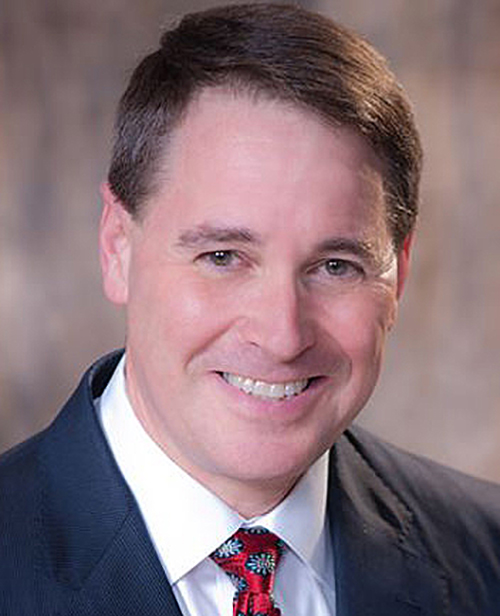
“As payers and hospitals continue [to] drive consolidation across the healthcare system, it is becoming more and more difficult for a physician to maintain an independent practice,” stated Robert Seligson (above), PAI President and CEO of the North Carolina Medical Society, in the PAI news release. “Payment policies mandated by insurers and [the] government heavily favor large health systems, creating a competitive advantage that stacks the deck against independent physicians, who are already struggling to survive under expensive, time-consuming administrative and regulatory burdens.” (Photo copyright: Physicians Advocacy Institute.)
The newest data, released by PAI in 2018, suggest that from July 2015 to July 2016 hospitals were actively buying physician practices:
- 5,000 physician practices were acquired by hospitals;
- 8% to 47% growth in hospital-owned practices in every region of the U.S.; and,
- More than 33% of Midwest physician practices were hospital-owned in 2016.
The data also indicated that more doctors had chosen to become employed by healthcare systems, giving up their independent status. From mid-2015 to mid-2016:
- 14,000 more physicians became hospital employees;
- 11% increase in employed physicians; and
- 5% to 22% growth of hospital-employed doctors in every U.S. region, with more than 50% in the Midwest, 37% in the south, and 33% in Alaska and Hawaii.
This has had the expected impact on hospital finances. The 2017 American Medical Association (AMA) Physician Practice Benchmark Survey suggests hospital purchases of medical groups appear to be slowing, as hospitals’ cost to employ physicians increases, Modern Healthcare noted.
“Physician compensation is one of the fastest growing expenses in health systems. It has become as high as 10% of total expenses for some systems. The burden is not sustainable,” Joel French, Chief Executive Officer, SCI Solutions, told Modern Healthcare.
Medicare Pays More to Hospitals for the Same Services
The PAI-Avalere report also noted that Medicare pays more for certain services when performed in hospital outpatient departments instead of doctors’ offices.
A blog post in the American Journal of Managed Care (AJMC) detailed a few of the differences:
- $5,148 for hospital cardiac imaging compared to $2,862 in a doctor’s office;
- $1,784 for a colonoscopy in-hospital versus $1,322 in a physician’s office; and,
- $525 for in-hospital evaluation and management services compared to $406 in the doctor’s office.
“The shift toward more physicians employed by hospitals could mean higher costs for the entire healthcare system,” Kelly Kenney, PAI Executive Vice President, stated in the PAI news release.
Practice Ownership Effects Quality of Care
While the PAI-Avalere analysis explored physician employment’s impact on payment for some services, another study explored its effects on quality of care.
Researchers analyzed data from three national surveys of physician practices. Their report, published in the American Journal of Managed Care (AJMC), found that in hospital-owned physician practices, there was more use of recommended care management processes (CMPs), such as, disease registries and nurse coordinators.
“The current findings suggest that hospital acquisition of practices may have beneficial effects for patients with chronic illnesses,” the researchers wrote in AJMC.
As medical groups change owners, independent clinical laboratories must work hard to retain the testing business—especially when the new owner is a hospital or healthcare system with its own in-hospital medical laboratories.
—Donna Marie Pocius
Related Information:
Updated Physician Practice Acquisition Study: National and Regional Changes in Physician Employment 2012-2016
Five Thousand Independent Physician Practices Acquired by Hospitals in 12 Months
Hospital Ownership of Physician Practices Increases Nearly 90% in Three Years
Hospital Acquisition of Independent Physician Practices Continues to Increase
American Medical Association Physician Practice Benchmark Survey
For the First Time Ever, Less Than Half of Physicians are Independent
Trends in Hospital Ownership of Physician Practices and the Effect on Processes to Improve Quality






